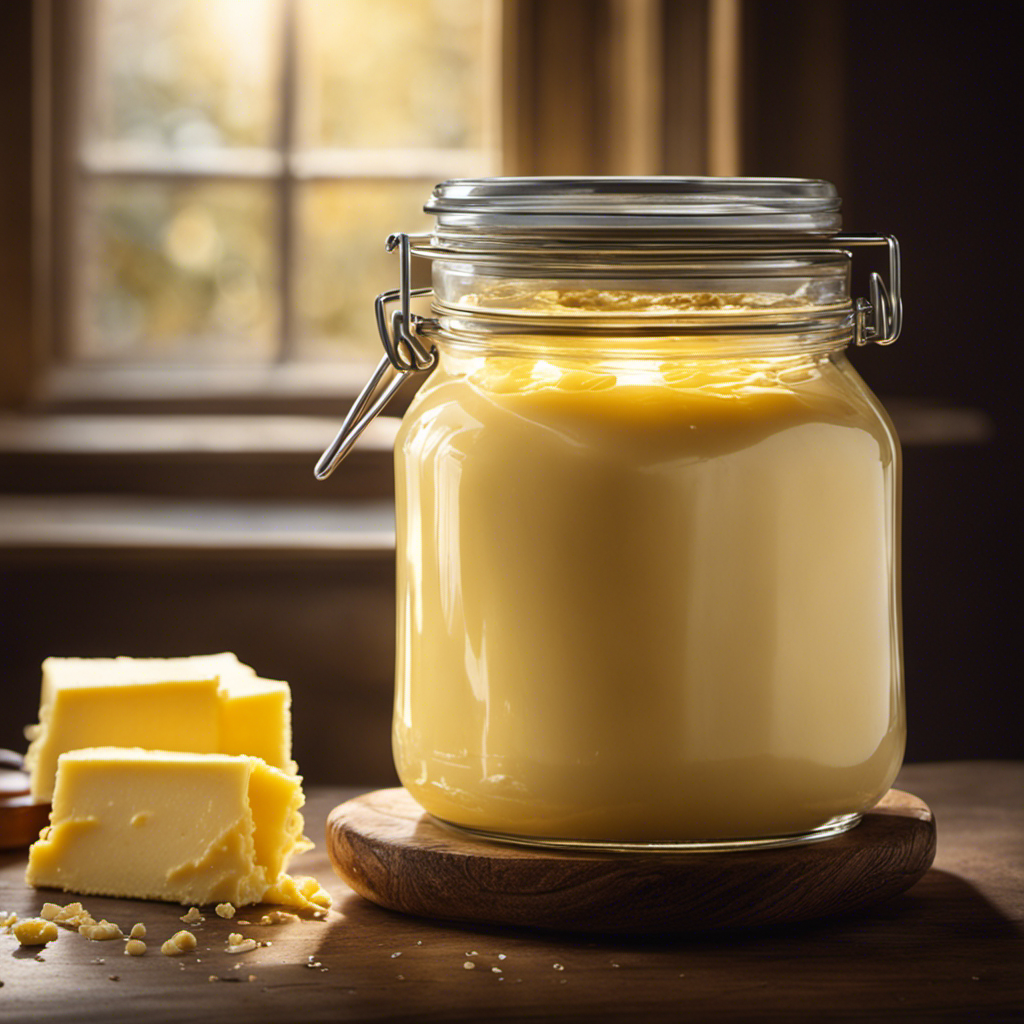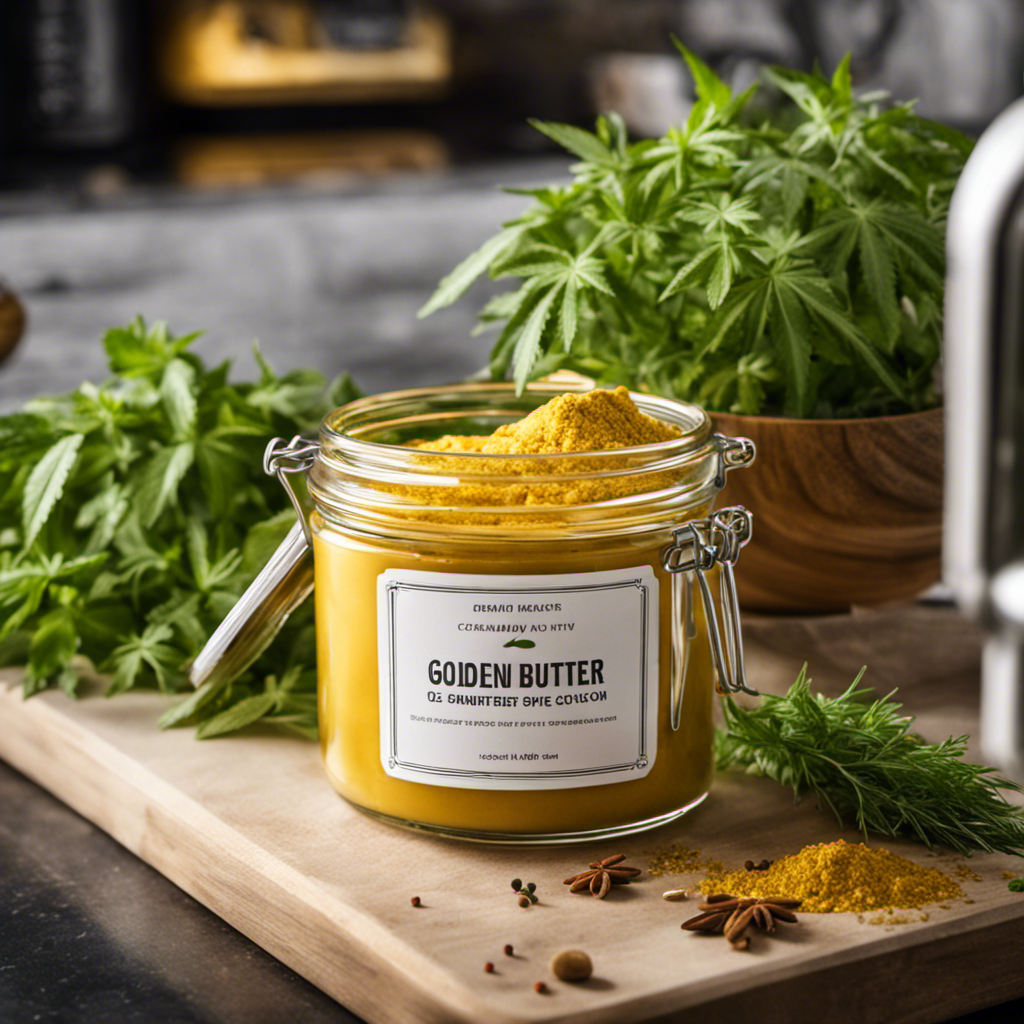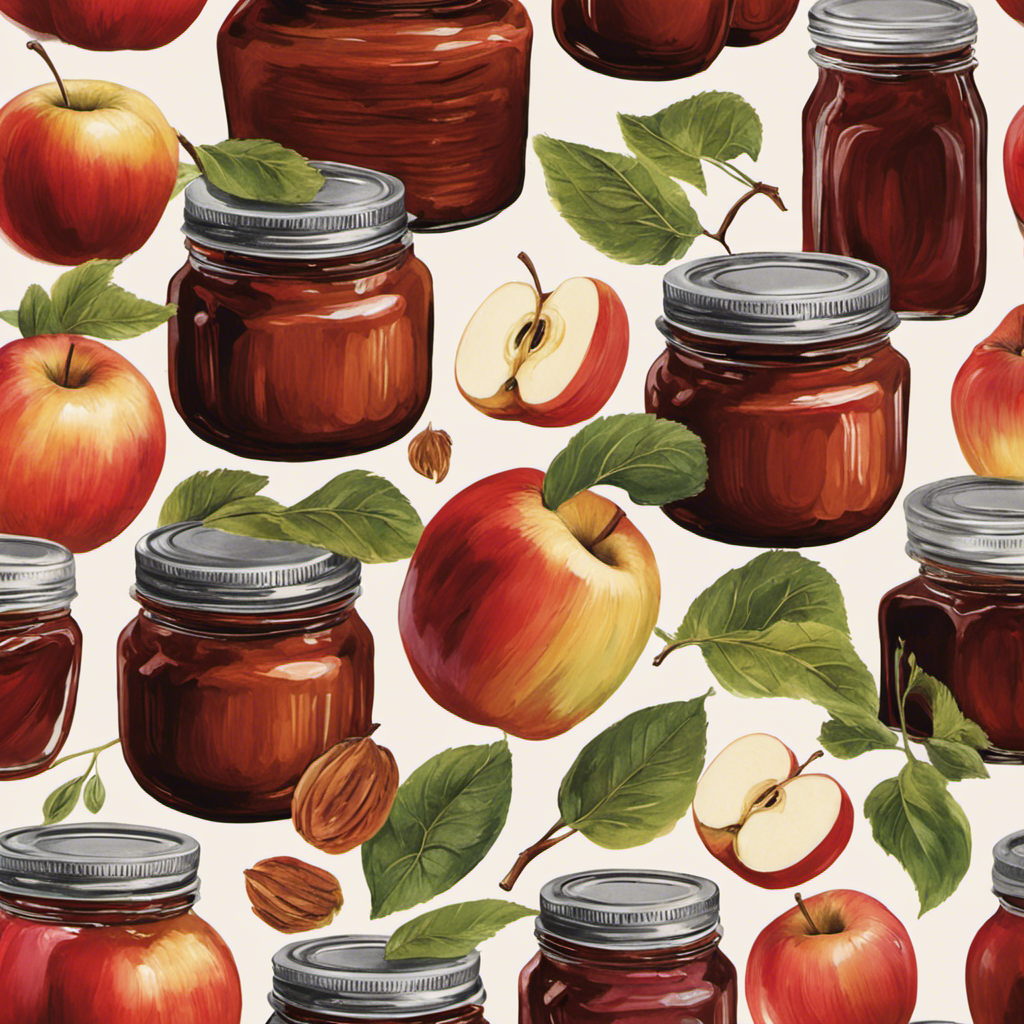Ever thought about how long your homemade butter will stay fresh in the refrigerator? Well, I have the answer for you.
In this article, I’ll be diving into the shelf life of homemade butter, the factors that affect its longevity, and the best ways to store it for optimal freshness.
We’ll also explore the tell-tale signs of spoiled butter and some tips on how to extend its lifespan in the fridge.
So, let’s get started and make sure your butter stays deliciously fresh!
Key Takeaways
- Homemade butter typically lasts for about two to three weeks in the fridge.
- The method used to churn the butter affects its shelf life.
- Using fresh cream and following a trusted recipe can increase shelf life.
- Proper storage techniques, such as using an airtight container and maintaining a consistent temperature, are essential for prolonging the freshness of homemade butter.
Shelf Life of Homemade Butter
Homemade butter typically lasts for about two to three weeks in the fridge, as long as you store it properly.
When it comes to making your own butter, there are a few key factors that can affect its shelf life.
First, the method you use to churn the butter plays a role. Butter churners, such as hand-crank or electric churners, help ensure that the butter is properly separated from the buttermilk, which can help extend its shelf life.
Additionally, the ingredients and recipe you use for making homemade butter can also impact its longevity. Using fresh cream and following a tried and tested homemade butter recipe can increase its shelf life.
Factors Affecting the Longevity of Homemade Butter
To maximize the shelf life of your homemade butter in the refrigerator, it’s important to consider various factors.
There are several factors that can affect the taste and longevity of homemade butter.
First, the quality of the cream used to make the butter is crucial. Fresh, high-quality cream will result in a better-tasting and longer-lasting butter.
Additionally, proper storage techniques are essential. Butter should be stored in an airtight container to prevent it from absorbing any odors or flavors from other foods in the fridge. It should also be kept at a consistent temperature, ideally between 32 and 40 degrees Fahrenheit.
Lastly, it’s important to handle the butter with clean hands or utensils to avoid introducing any bacteria that could spoil the butter more quickly.
Storing Homemade Butter for Optimal Freshness
Storing your homemade butter in an airtight container will help maintain its freshness. To preserve the flavor and quality of your butter, it is important to consider the following factors:
-
Temperature: Keep your homemade butter stored at a cool temperature, ideally between 32°F and 40°F (0°C and 4°C).
-
Protection from light: Store your butter in a container that blocks light to prevent oxidation and maintain its flavor.
-
Airtight seal: Ensure that the container you use has a tight seal to prevent air from entering and causing the butter to spoil.
-
Proper packaging: Wrap your butter in wax paper or parchment paper before placing it in the airtight container to provide an extra layer of protection.
-
Avoid strong odors: Keep your butter away from strong-smelling foods to avoid absorbing unwanted odors.
By following these guidelines, you can extend the shelf life of your homemade butter and preserve its delicious flavor.
However, it is important to be aware of the signs of spoiled butter, which will be discussed in the next section.
Signs of Spoiled Homemade Butter
If your airtight container is not sealed properly, you might notice signs of spoiled butter. There are several causes of butter spoilage. Exposure to air, excessive heat, and contamination from bacteria or mold are common culprits. When butter is exposed to air, it oxidizes and becomes rancid, resulting in an unpleasant taste and smell. Excessive heat can cause the butter to melt and separate, compromising its texture and flavor. Bacteria and mold can grow on butter if it is not stored in a hygienic environment or if it comes into contact with contaminated surfaces.
To preserve homemade butter freshness, it is essential to store it in an airtight container in the refrigerator at a temperature between 32°F to 40°F. Regularly check the container for any signs of spoilage, such as off smells, unusual colors, or mold growth. If any of these signs are present, it is best to discard the butter.
Extending the Lifespan of Homemade Butter in the Fridge
Extending the lifespan of homemade butter in the fridge can be achieved by ensuring proper storage conditions and regularly checking for signs of spoilage. To help you preserve your butter for longer, here are some butter preservation techniques and DIY butter storage solutions:
- Keep the butter in an airtight container to prevent it from absorbing odors and flavors from other foods.
- Store the butter on the refrigerator’s top shelf, where the temperature is most consistent.
- Consider wrapping the butter in parchment paper before placing it in the container to protect it from light exposure.
- If you have a large batch of butter, divide it into smaller portions and freeze them for long-term storage.
- Regularly inspect the butter for any signs of mold, off smells, or unusual textures, and discard it if any spoilage is detected.
Frequently Asked Questions
Can I Freeze Homemade Butter to Extend Its Shelf Life Even Further?
Yes, freezing homemade butter can extend its shelf life. Freezing slows down the growth of bacteria, preserving the butter for longer. Alternatively, you can also consider storing it in an airtight container in the refrigerator.
How Can I Tell if My Homemade Butter Has Gone Bad?
To determine if homemade butter has spoiled, look for signs such as a rancid smell, off-flavors, or a change in texture. It’s important to follow proper homemade butter storage tips to extend its shelf life.
Is It Safe to Consume Homemade Butter Past Its Expiration Date?
Consuming rancid homemade butter can be unsafe, as it can cause food poisoning. It’s important to check for signs of spoilage before consuming, even if the expiration date has not passed.
Can I Store Homemade Butter in a Plastic Container Instead of a Glass Jar?
Yes, you can store homemade butter in a plastic container instead of a glass jar. The choice of container does not affect the freshness of the butter as long as it is airtight and kept in the fridge.
Does the Type of Cream Used in Making Homemade Butter Affect Its Longevity?
The type of cream used in making homemade butter can impact its longevity. Pasteurized cream tends to have a longer shelf life, while raw cream may shorten the butter’s freshness.
Conclusion
In conclusion, homemade butter can last in the fridge for up to two weeks. However, various factors such as temperature, exposure to light, and contamination can affect its longevity.
To ensure optimal freshness, store your homemade butter in an airtight container and keep it away from direct sunlight. Always check for signs of spoilage, such as a rancid smell or mold growth, before using it.
By following these guidelines, you can extend the lifespan of your homemade butter and enjoy its creamy goodness for longer. So, don’t let your butter go sour – take proper care and savor it to the last dollop!










